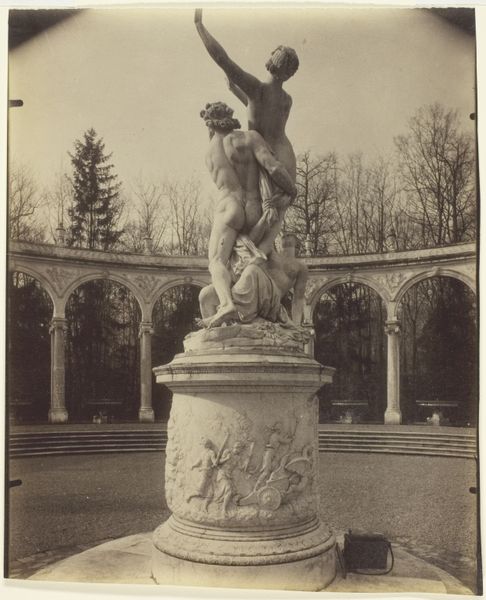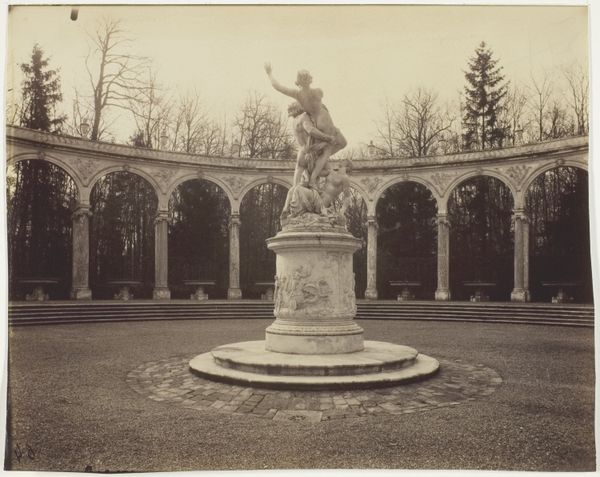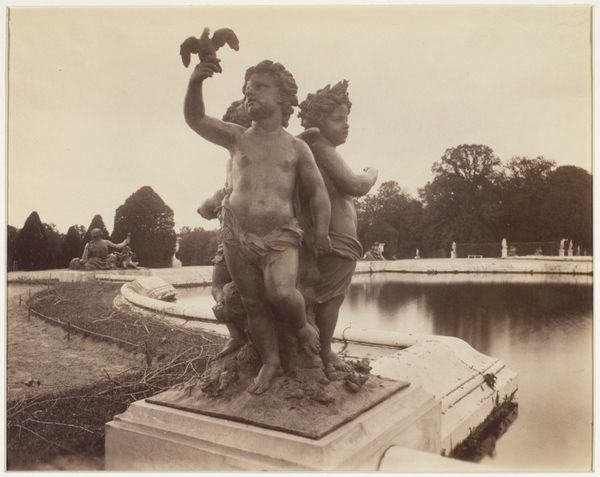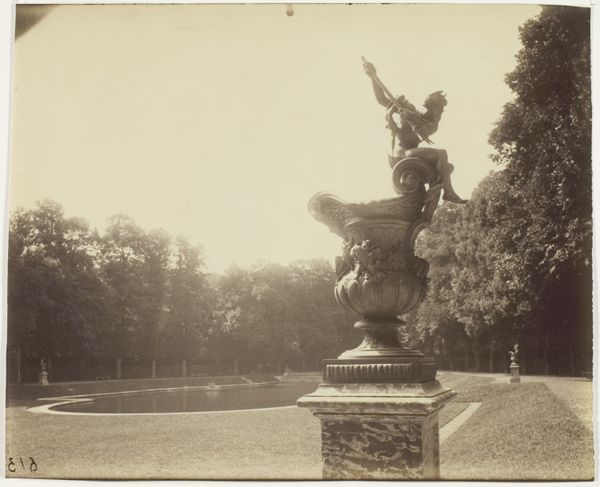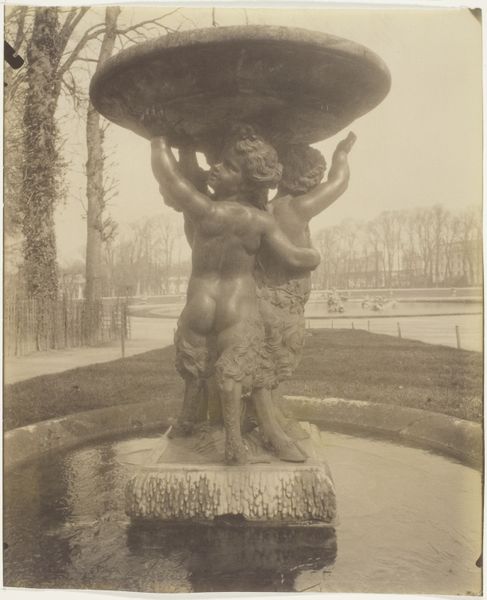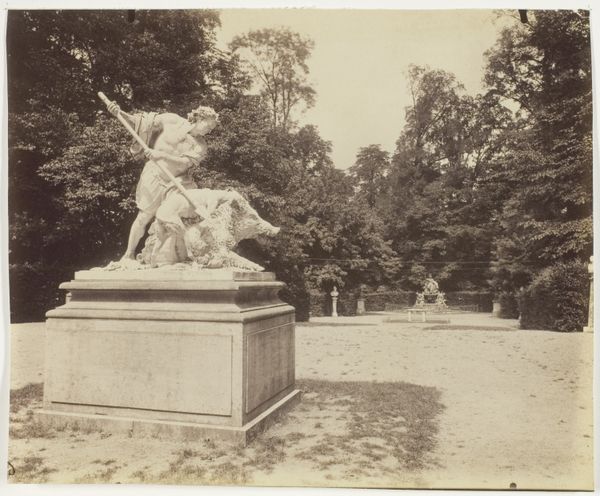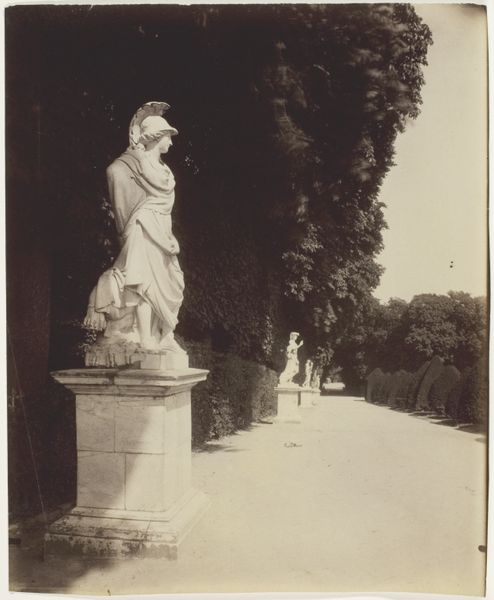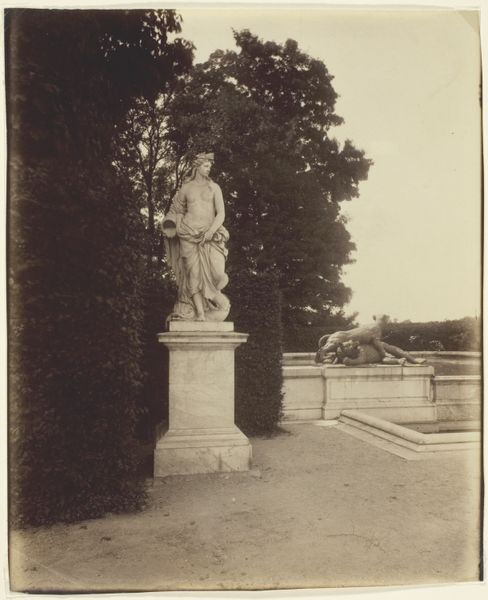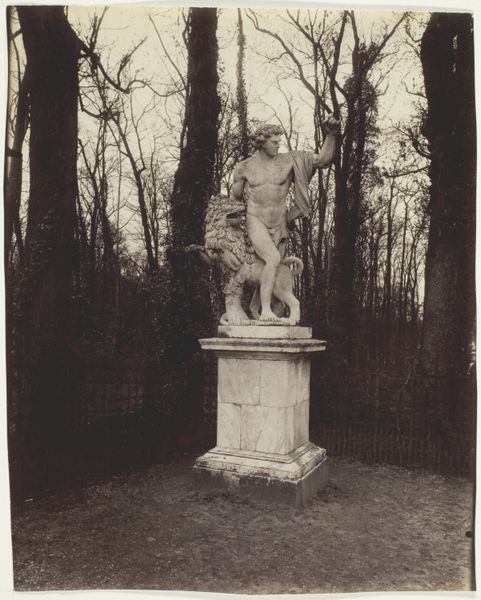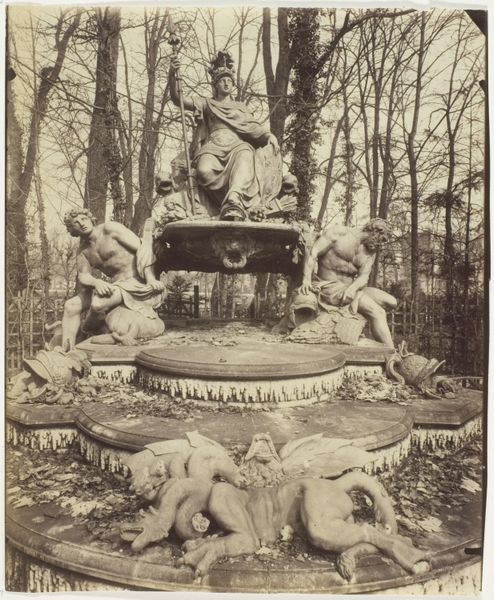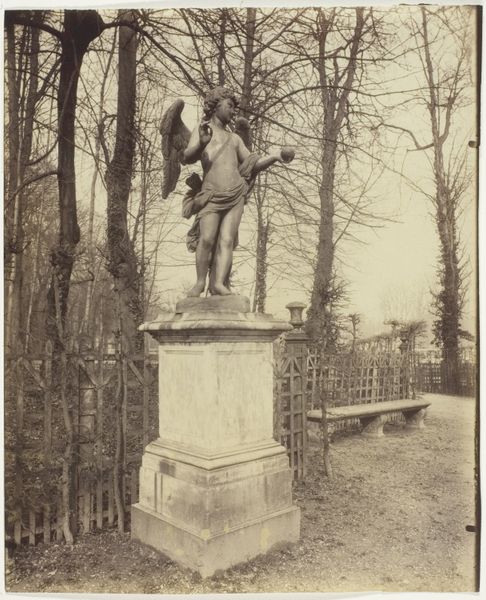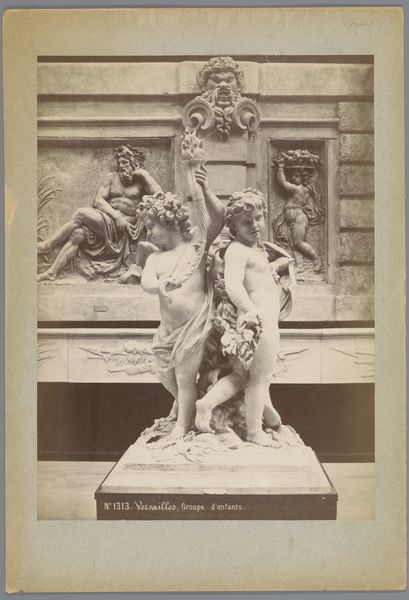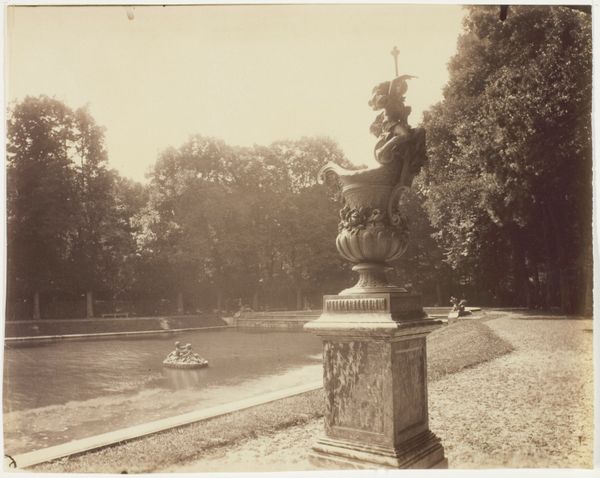
print, photography, sculpture, site-specific
#
portrait
# print
#
sculpture
#
landscape
#
classical-realism
#
photography
#
sculpture
#
site-specific
#
cityscape
#
statue
Dimensions: 21.8 × 17.6 cm (image); 21.9 × 18 cm (paper)
Copyright: Public Domain
Curator: Eugène Atget's photograph, "Versailles, La Collonnade," taken in 1904, offers us a glimpse into the meticulously designed gardens of Versailles. Atget was keen to capture the shifting landscape of Paris and its environs. What’s your take on it? Editor: Initially, I’m struck by its quiet solemnity, a sort of muted grandeur. The photograph emphasizes tonal relationships, the subtle gradation in the monument's hue, which echoes a classical, formal design, and the positioning against the pale light. Curator: Indeed, Atget’s photography documents the spaces and the relics of a dying aristocracy, during the Belle Époque. You know, his project developed alongside significant shifts in French society and government; in many respects, he wanted to keep record of a bygone era. Editor: He’s done it wonderfully; Atget has created incredible depth in a limited palette by arranging different layers to guide the viewers eye, like the dark apertures framed by pale colonnade which creates almost a backdrop to the sculptural elements. The statues and structure share design elements, which gives visual coherence. Curator: Absolutely. Versailles was not just a garden, but a potent symbol of royal authority and French identity. By focusing on details, Atget calls us to consider the values that shaped that identity. Atget would make thousands of images like these, often selling the photographs to artists and architects as reference material, thus democratizing, in a way, what was meant to communicate exclusivity and authority. Editor: One also detects in Atget’s choice an interplay of solid and void that carries through different design levels from plinth, to the statues to the architecture itself. The use of negative space becomes as significant to our reading of the monument. Curator: It also presents a critical lens, because the location itself became contested space. He offers a sense of time—not necessarily linear or chronological, but lived and experiential. Editor: Yes, I would add his photographic technique with a slightly soft focus emphasizes tonal gradations that might not be visible in harsher light or resolution. Curator: Thank you for these fascinating insights! Editor: Indeed, a very engaging piece.
Comments
No comments
Be the first to comment and join the conversation on the ultimate creative platform.
